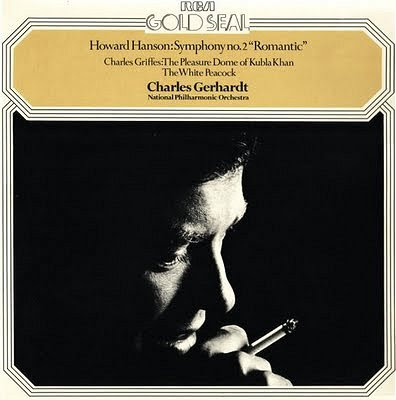Celebrating Easter in music and pictures

Easter Sunday is the date of the annual celebration of Christ’s resurrection. The date of Easter is determined by the lunar cycle, with each Easter Sunday maintaining the same relationship to the preceding astronomical full moon as occurred at the resurrection in 30 AD. Because the Western Christian (Catholic, Anglican and Protestant) and Eastern Christian (Orthodox) churches use different calendars (Gregorian and Julian respectively) Easter is often celebrated on different dates by the two churches. 2007 is one of the exceptional years when the dates coincide, the previous one was 2004 and the next is 2010.
Orthodoxy was made the official religion of Russia in 988, and the photographs with this article were taken by me in the mother church of all Eastern Christians, Hagia Sophia in Istanbul. The Russian Orthodox Church followed the Byzantine musical tradition which excluded women’s voices and any instruments except bells. But while the Greek and Middle Eastern Orthodox Churches restrict their liturgical music to unison chant, the Russian and Balkan churches use polyphony. Large numbers of hymns are included in the Russian liturgy, and, except for several celebrated examples from 20th century composers, the church discouraged musical settings of the text. This means there is no Orthodox equivalent to the masses of Palestrina, Haydn and Mozart.

Easter is the most important festival in the Orthodox calendar, and the liturgical music for the festival combines ancient melodies with harmonisations, or original themes, from 19th and 20th century composers. An excellent overview is available on Apex’s super-budget CD, Russian Chants – Russian Easter Liturgy. The CD is sung by the Liturgical Choir of Moscow under Father Amvrosy, and was recorded in Moscow in 1992 by a Russian production team. The Liturgical Choir was an early product of glasnost, and was founded in 1987 to revive and carry on the great traditions of Russian Orthodox liturgical music. Their programme ranges from ancient monodies to harmonisations by Balakirev (1836-1910) and Kalinnikov (1870-1927), and includes the centrepiece of the Easter celebration, Christ is risen from the dead, sung in Greek, Latin and Slavonic.

The best known concert settings of the Orthodox liturgy are by Rachmaninov (Vespers and Liturgy of St John Chrysostom), Tchaikovsky (Liturgy of St John Chrysostom), and Alexander Grechaninov (Vespers). But there is another little-known gem from Grechaninov, who was a contemporary of Rachmaninov. The choral Passion Week cycle was composed in 1911/2, and was premiered in Moscow in 1912. It was only performed once more before Grechaninov fled to France and then the US following the 1917 revolution. Under glasnost the work was revived in Russia in the 1990s, but has remained virtually unknown in the West.
That is about to change as Chandos has just released a superb new recording with the Phoenix Bach Choir and Kansas City Chorale directed by Charles Bruffy. Grechaninov’s 74 minute setting of hymns and biblical texts may be monumental, but it is also meditative and mystical. The recording made in the Church of the Blessed Sacrament, Kansas City is demonstration quality,
 and the choirs more than counterbalance any linguistic shortcomings with their superb technique. The recording was made in just two consecutive days, a remarkable achievement for the choirs and soloists as this is a very big a cappella sing with no instruments to hide behind. Well done everyone, and well done Chandos for making their second recording of Grechaninov’s Passion Week. The first was made in Moscow in the 1990s with Valeri Polyansky conducting the Russian State Symphonic Cappella, the new one is already on my shortlist for best CD of 2007.
and the choirs more than counterbalance any linguistic shortcomings with their superb technique. The recording was made in just two consecutive days, a remarkable achievement for the choirs and soloists as this is a very big a cappella sing with no instruments to hide behind. Well done everyone, and well done Chandos for making their second recording of Grechaninov’s Passion Week. The first was made in Moscow in the 1990s with Valeri Polyansky conducting the Russian State Symphonic Cappella, the new one is already on my shortlist for best CD of 2007.* Listen to samples and buy MP3 downloads of Grechaninov's Passion Week here.
Now read the good news from Kiev.
All the photos were taken by me in Hagia Sophia during our recent visit to Istanbul. Any copyrighted material on these pages is included for "fair use", for the purpose of study, review or critical analysis only, and will be removed at the request of copyright owner(s). Report broken links, missing images and other errors to - overgrownpath at hotmail dot co dot uk









Comments
More precisely, Orthodoxy became the official religion of the huge Kievan Rus Empire in 988 C.E.
Under Volodymyr the Great (c. 958 –1015), the Kievan Rus Empire embraced Byzantine Christianity. Volodymyr the Great sent envoys to study the religions of the various neighboring empires whose representatives had been urging him to embrace their respective faiths.
He himself was baptised a Christian in Cherson, in today's western Crimea. Upon returning to Kiev [Kyiv], he used his large imperial wealth to build Christian Churches in Kyiv, throughout Kievan Rus, and in Mount Athos. [Volodymyr was of Scandinavian and Slavic ancestry. After the death of his first wife, Anna, the sister of Emperor Basil II of Byzantine; he reportedly married the granddaughter of [Germanic] Otto I the Great, the first Holy Roman Emperor.]
Modern Russia [and Ukraine] came later.